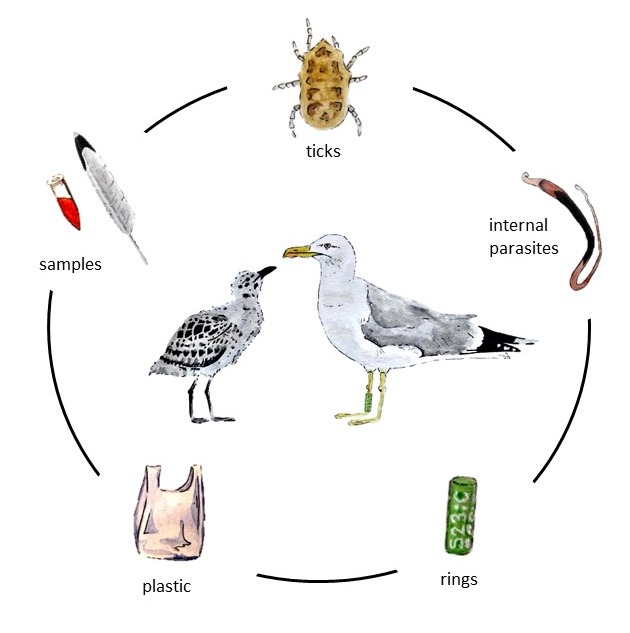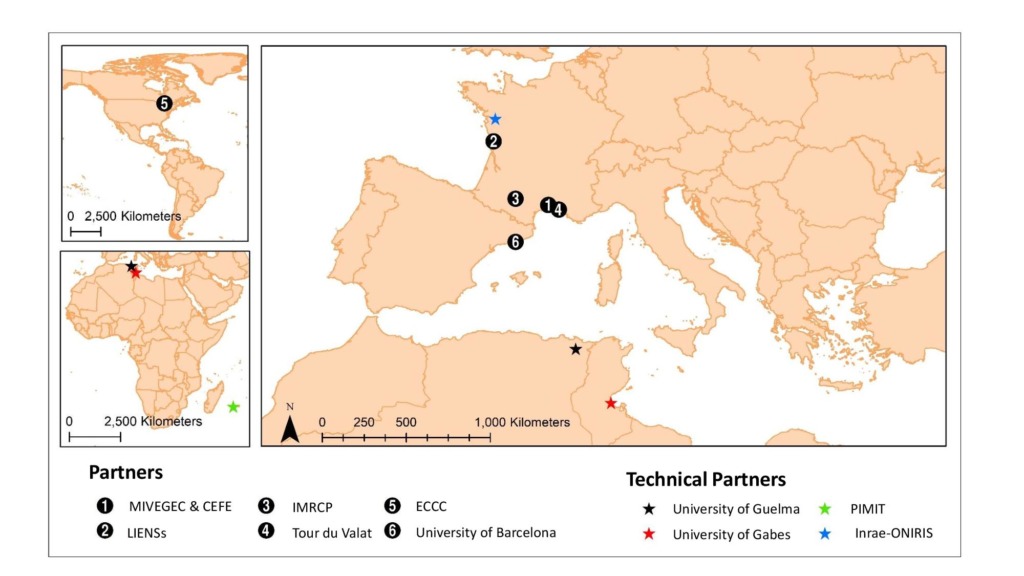Objectives

Environmental pollutants and pathogens can have negative impacts on wildlife health and population dynamics. While their effects are often sub-lethal or weak individually, little is known about their cumulative and interactive effects when experienced together. The objective of EcoDIS is to address this issue via an interdisciplinary approach that combines demographic monitoring, ecotoxicology, population genetics, epidemiology, and movement ecology to study how levels of pollutants (TE & plastics) and parasites in the Yellow-legged Gull (Larus michahellis) alter their reproductive success, population dynamics and movement patterns, and subsequently modify the circulation of infectious agents at different spatial scales. By using a widespread wildlife species frequently found in urban areas, results are of both significant fundamental (i.e., effects of environmental stressors on wildlife population dynamics) and applied interest (i.e., pathogen circulation by wildlife and human exposure risk).
Actions and methodology
- Map spatial variability in gull exposure to pollutants and parasite/pathogens across the western Mediterranean Sea. This involves assessing pollutant levels and exposure to parasites and pathogens in birds from a series of approximately 15 colony locations.
- Evaluate the combined effects of these potential stressors on gull demographics (reproductive success, survival and return rates) via monitoring in select focal colonies. If parasites act as pollution sinks, absorbing pollutants faster than their hosts, they may confer a benefit to hosts in highly polluted locations. In contrast, if a contaminant lowers parasite fitness, hosts may prefer to use contaminated sites to escape deleterious parasites.
- Link observational and experimental data to gull movement among colonies and between urban / non-urban areas to examine disease circulation and human risk. We will then assess if combined stressors alter movement and if movement can, in turn, explain the structure of infectious agents at different spatial scales. In addition, the integration of this data with information on feeding regimes will enable us to evaluate the degree to which health status and reproductive success are linked to the use of anthropogenic resources.

© Celine van Weelden
Team
- Project leader: Marion Vittecoq and Karen D. McCoy (CNRS)
- Date of project: 2020 – 2025
Partners
Scientific and technical partners
- Maladies Infectieuses et Vecteurs : Ecologie, Génétique, Evolution et Contrôle (MIVEGEC)
- LIttoral ENvironnement Et Sociétés (LIENSs)
- Centre d’Ecologie Fonctionnelle et Evolutive (CEFE)
- Laboratoire des Interactions Moléculaires et Réactivités Chimiques et Photochimiques (IMRCP)
- Environment and Climate Change Canada
- Universitat de Barcelona
- Institut Mediterrani d’Estudis Avançats’ (CSIC – University of Balearic Islands)
- Office de l’Environnement de la Corse
Financial partners
- CNRS (MITI CIPPE and EcoSan programmes)
- ANR (EcoDIS n°ANR-20-CE34-0002)
- Labex CEMEB DisTic (with the support of the ANR “Investments for the Future” n° ANR-10-LABX-04-01)
- OFB